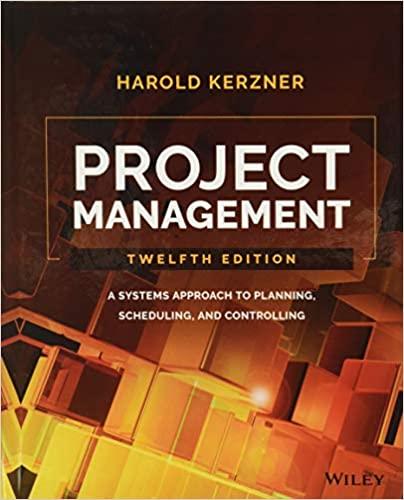Question
Slide 1: Title Slide - Performance Management System at ANG: A Comprehensive Approach - Introduction to the components and implementation of a comprehensive performance management
Slide 1: Title Slide - Performance Management System at ANG: A Comprehensive Approach - Introduction to the components and implementation of a comprehensive performance management system.
Explanation:
Slide 1: Title Slide - Performance Management System at ANG: A Comprehensive Approach - Introduction to the components and implementation of a comprehensive performance management system.
Slide 2: Introduction - Introducing ANG's need for a comprehensive performance management system.* - Performance management entails various components for effective implementation. - Clear communication, alignment with organizational goals, and employee development are key aspects.
Slide 3: Components of a Comprehensive Approach - 1. Goal Setting** - Establishing clear, attainable objectives aligned with organizational goals. - 2. Frequent Feedback - Providing consistent and constructive feedback for continuous improvement. - 3. Coaching and Growth Planning - Investing in employee development through mentoring and training initiatives. - 4. Alignment with Organizational Objectives - Ensuring individual employee goals contribute to overall organizational success.
Slide 4: Example: Google's Performance Management System - Illustrating Google's exemplary performance management system. - Google's approach incorporates goal setting, feedback mechanisms, coaching, and alignment. - The Objectives and Key Results (OKRs) framework is central to goal setting.
Slide 5: Goal Setting at Google - Exploring Google's approach to goal setting. - OKRs framework: Specific, measurable objectives aligned with organizational goals. - Enables employees to set ambitious yet achievable targets.
Slide 6: Regular Feedback at Google - Highlighting Google's culture of continuous feedback. - Platforms like Google Feedback facilitate real-time input from employees. - Supervisors provide consistent, helpful criticism to foster growth.
Slide 7: Coaching and Development Planning at Google - Examining Google's focus on employee development. - Initiatives like Career Guru and Google University support professional growth. - Managers serve as mentors, offering guidance and support.
Slide 8: Alignment of Individual and Company Goals at Google
- Emphasizing the importance of alignment at Google. - Employee goals are aligned with broader organizational objectives. - Promotes synergy and collective achievement across teams.
Slide 9: Transformative Changes and Kotter's 8-Step Process - Introducing Kotter's 8-Step Process for change management. - An effective model for implementing transformative changes in performance management. - Includes steps such as creating a sense of urgency and continuous monitoring.
Slide 10: Applying Kotter's 8-Step Process at ANG - Adapting Kotter's model to ANG's performance management system. - Creating urgency: Identifying the need for change and its benefits. - Establishing a guiding coalition: Involving key stakeholders in the change process. - Planning training and support: Providing resources for successful implementation. - Continuous monitoring and feedback: Evaluating the effectiveness of the new system.
Slide 11: Conclusion - Summarizing the key points and benefits of a comprehensive performance management system. - By adopting a holistic approach, ANG can enhance employee engagement, productivity, and organizational success. - Implementing transformative changes requires a systematic approach like Kotter's 8-Step Process.
Slide 12: References - Listing the sources used in the presentation. - Armstrong, M., & Taylor, S. (2014). Armstrong's handbook of human resource management practice. - Cameron, E., & Green, M. (2015). Making sense of change management: A complete guide to the models, tools, and techniques of organizational change. - Cawsey, P., Greasley, A., & Sturdy, P. (2016). A review of the performance management literature: A focus on the last decade of research. - Kotter, J. P. (2012). Leading change. - Lawler, E. E., & Mohrman, S. A. (2003). The future of human resource management: Renewing the relevance of HRM in the 21st century. - Whitmore, J. (2009). Coaching for performance. - Steiber, A. (2014). The Google model: Managing continuous innovation in a rapidly changing world. - Tran, S. K. (2017). GOOGLE: a reflection of culture, leader, and management. - Stalder, J. P. (2022). Goals. In Project Management for Drug Developers
Follow-up Questions
You14 hours agoRead by tutor
Hi i also need the explanation of these slides like how to present in detail so please give me detail of these slides for presentation for example i need the material which i can explain
Step by Step Solution
There are 3 Steps involved in it
Step: 1

Get Instant Access to Expert-Tailored Solutions
See step-by-step solutions with expert insights and AI powered tools for academic success
Step: 2

Step: 3

Ace Your Homework with AI
Get the answers you need in no time with our AI-driven, step-by-step assistance
Get Started


